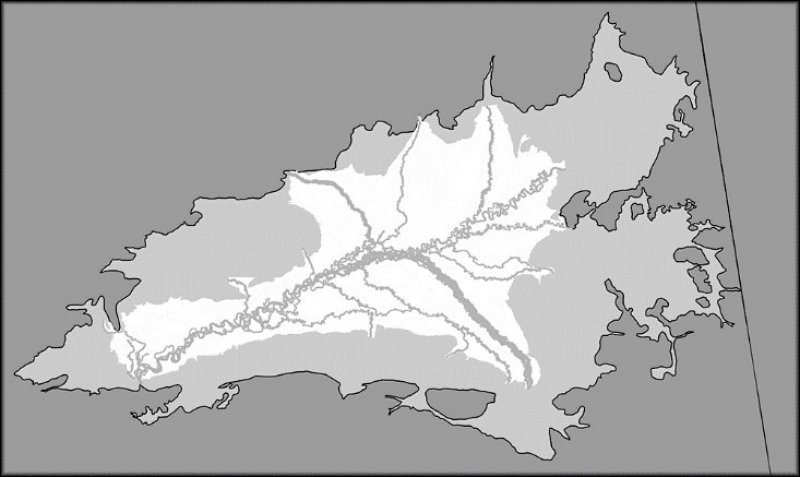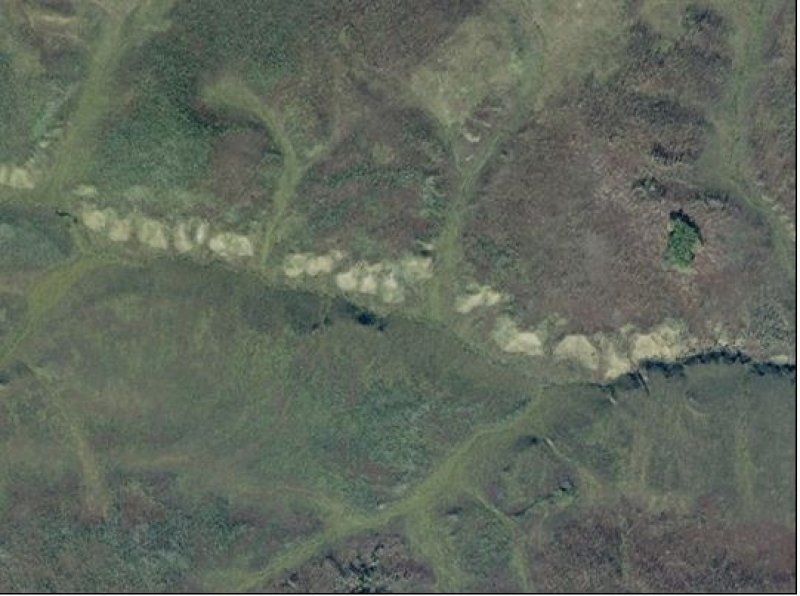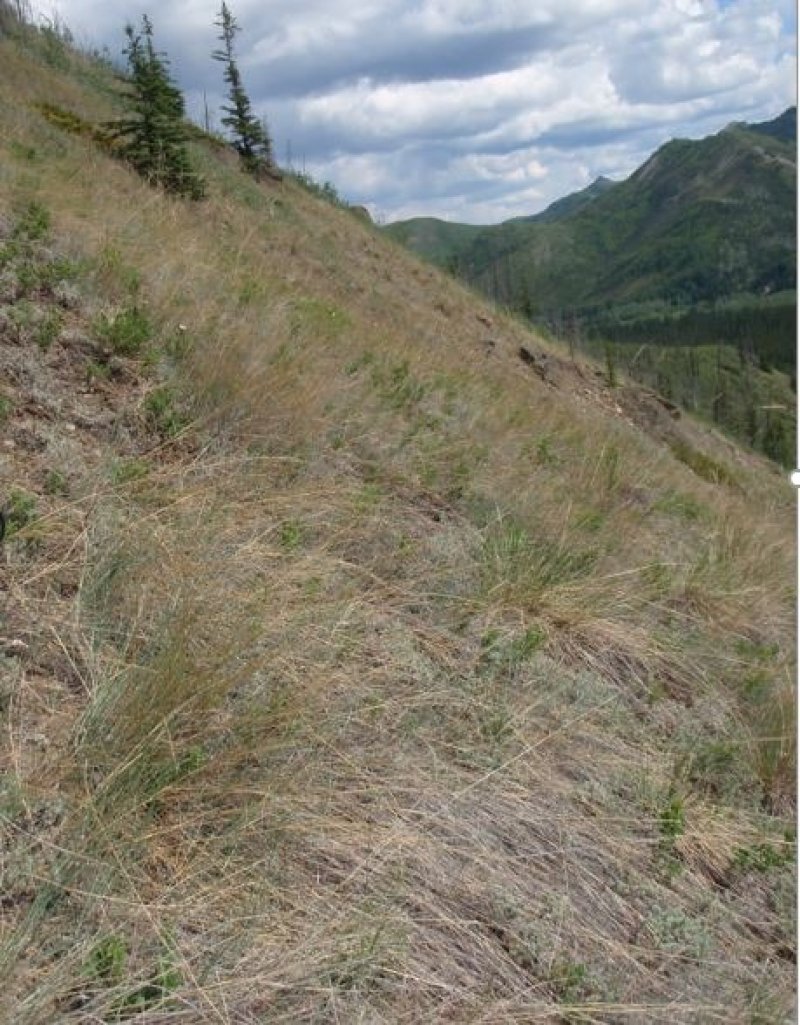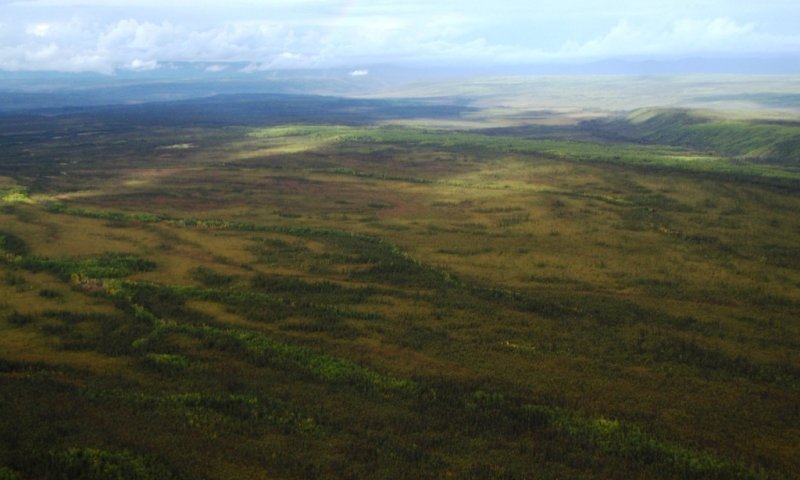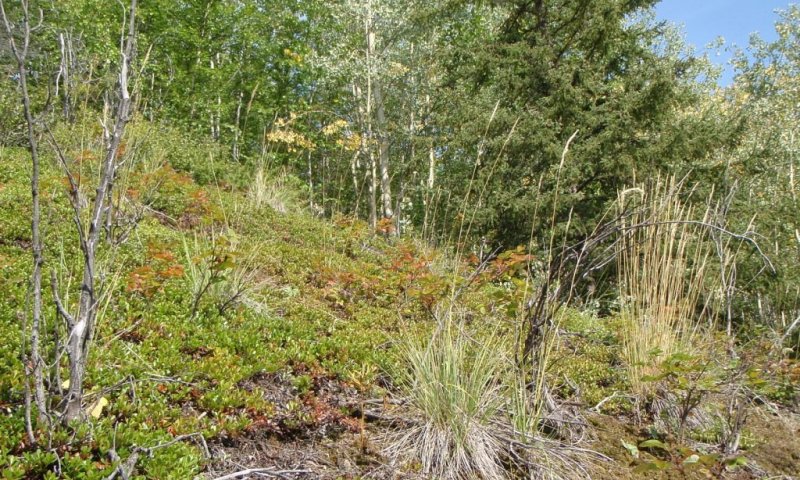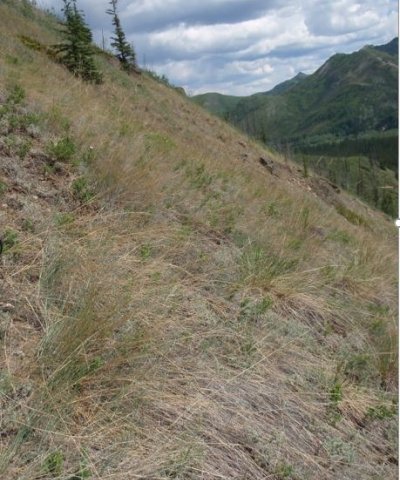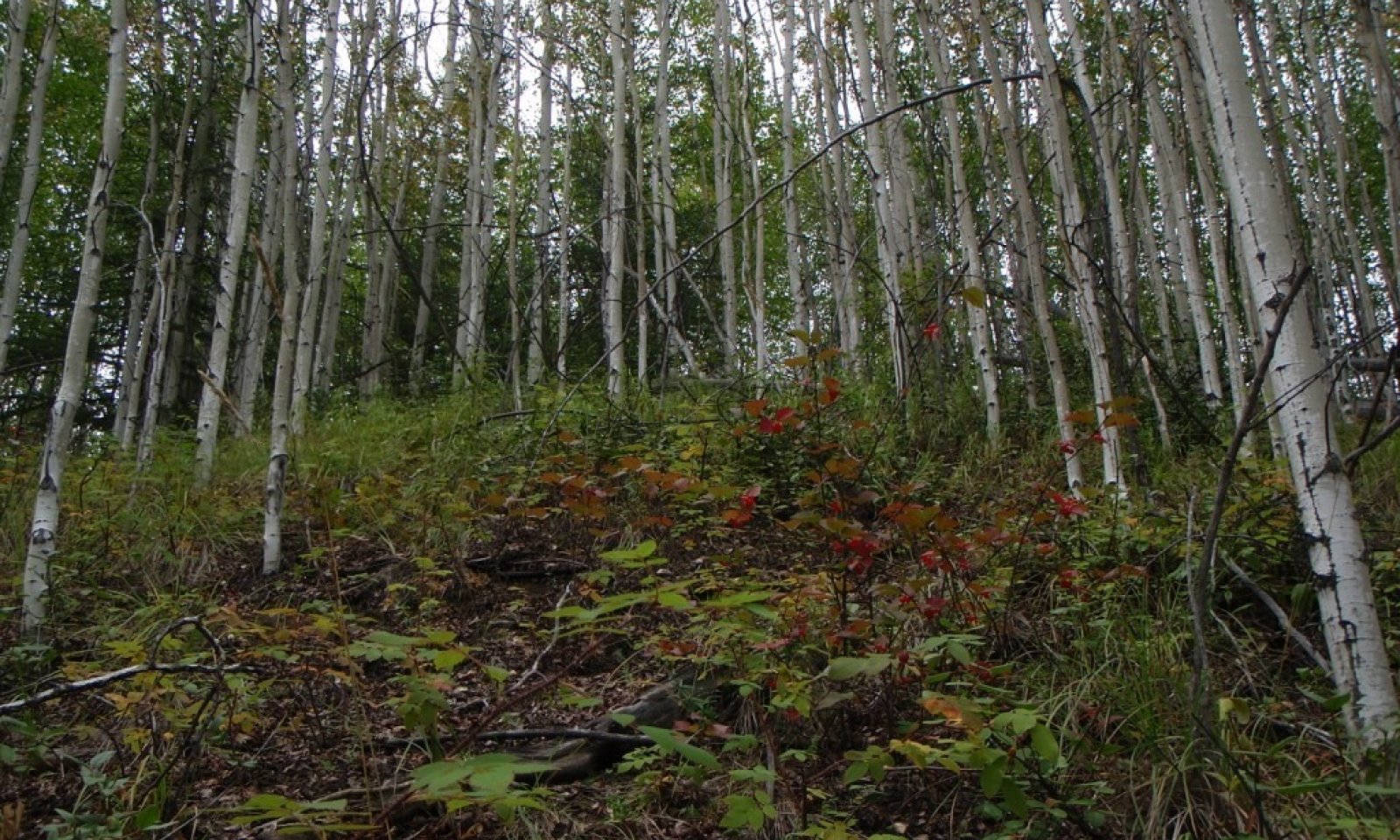

Natural Resources
Conservation Service
Ecological site XA232X02Y211
Boreal Loamy Escarpments
Last updated: 5/18/2020
Accessed: 12/20/2025
General information
Provisional. A provisional ecological site description has undergone quality control and quality assurance review. It contains a working state and transition model and enough information to identify the ecological site.
MLRA notes
Major Land Resource Area (MLRA): 232X–Yukon Flats Lowlands
The Yukon Flats Lowlands MLRA is an expansive basin characterized by numerous levels of flood plains and terraces that are separated by minimal breaks in elevation. This MLRA is in Interior Alaska and is adjacent to the middle reaches of the Yukon River. Numerous tributaries of the Yukon River are within the Yukon Flats Lowlands MLRA. The largest are Beaver Creek, Birch Creek, Black River, Chandalar River, Christian River, Dall River, Hadweenzic River, Hodzana River, Porcupine River, and Sheenjek River. The MLRA has two distinct regions—lowlands and marginal uplands. The lowlands have minimal local relief and are approximately 9,000 square miles in size (Williams 1962). Landforms associated with the lowlands are flood plains and stream terraces. The marginal uplands consist of rolling and dissected plains that are a transitional area between the lowlands and adjacent mountain systems. The marginal uplands are approximately 4,700 square miles in size (Williams 1962).
This MLRA is bounded by the Yukon-Tanana Plateau to the south, Hodzana Highlands to the west, Porcupine Plateau to the east, and southern foothills of the Brooks Range to the north (Williams 1962). These surrounding hills and mountains partially isolate the Yukon Flats Lowlands MLRA from weather systems affecting other MLRAs of Interior Alaska. As a result, temperatures are generally warmer in summer and colder in winter than is characteristic in other areas at comparable latitude. There is a moisture and temperature gradient in which the lowlands region tends to be drier and colder and the surrounding marginal uplands region tends to be moister and warmer (PRISM Climate Group 2006).
The Yukon Flats Lowlands MLRA is mostly undeveloped lands that are sparsely populated and not accessible by a road system. A number of villages, including Beaver, Birch Creek, Chalkyitsik, Circle, Fort Yukon, Stevens Village, and Venetie, are adjacent to the Yukon River or one of its major tributaries. The largest village is Fort Yukon, which according to the 2010 U.S. Census has 583 residents that are dominantly Gwich’in Alaska Natives.
LRU notes
Alaska has no officially recognized LRU. However, there appear to be two distinct LRU in the Yukon Flats Lowlands MLRA. These LRU are thought to have differing climatic regimes, landforms, and soil types (STATSGO and Jorgensen and Meidinger 2015). The two LRU were previously discussed in the MLRA notes section above and are termed the lowlands LRU and the marginal uplands LRU.
This ecological site is associated with the marginal uplands LRU.
Classification relationships
Yukon Flats Lowlands MLRA.
Ecological site concept
This ecological site is associated with erosive escarpments in the marginal uplands region of the Yukon Flats Lowlands MLRA. During field work, these escarpments had limited sampling. Flight and satellite reconnaissance results in readily recognizable escarpments in the marginal uplands region of the Yukon Flats Lowlands MLRA (fig. 3). Escarpments are considered very steep (50 to 100 percent slope), excessively drained, and appear to be erosive. Based on this reconnaissance and limited data collected from the Yukon Flats Lowlands and Interior Alaska Highlands MLRA, escarpments are believed to support multiple plant communities. These steep and dry slopes are likely prone to fire and this disturbance may result in significant slope erosion and multiple plant communities.
Reference state plant communities are believed to be closed deciduous forest and open low scrub (Viereck et al. 1992). Species that are thought to commonly occur in the reference state are quaking aspen (Populus tremuloides), prickly rose (Rosa acicularis), prairie sagewort (Artemisia frigida), common juniper (Juniperus communis), kinnikinnick (Arctostaphylos uva-ursi), purple reedgrass (Calamagrostis purpurascens), slender wheatgrass (Elymus trachycaulus), and American pasqueflower (Pulsatilla pates), northern bedstraw (Galium boreal), Rocky Mountain goldenrod (Solidago multiradiata), and three toothed saxifrage (Saxifraga tricuspidata).
Associated sites
| XA232X02Y217 |
Boreal Woodland Loamy Frozen Plain Wet This ecological site occurs where water accumulates on the slopes (i.e. lower third of slopes and swales) of the marginal uplands region of the Yukon Flats Lowlands MLRA. The marginal uplands are characterized by broad and extensive plains. Associated soils have very deep loess deposition, are prone to ponding, and are poorly drained. The reference plant community is characterized as needleleaf woodland (10 to 25 percent cover; Viereck et al. 1992) primarily composed of black spruce (Picea mariana). |
|---|---|
| XA232X02Y203 |
Boreal Scrub Loamy Frozen Drainages This ecological site occurs in drainageways of the marginal uplands region of the Yukon Flats Lowlands MLRA. The marginal uplands are characterized by broad and extensive plains. Associated soils flood occasionally (5 to 50 times in 100 years) for long durations of time (between 7 and 30 days). Soils range from poorly to very poorly drained. The reference plant community is characterized as closed tall scrub (Viereck et al. 1992). Black spruce commonly occurs but cover is generally low. |
| XA232X02Y227 |
Boreal Forest Loamy Frozen Plains Cold This ecological site occurs on colder slope positions (i.e. North facing slopes) in the marginal uplands region of the Yukon Flats Lowlands MLRA. Associated soils have very deep loess deposition and range from poorly to somewhat poorly drained. The reference plant community is characterized as an open needleleaf forest (25 to 60 percent cover; Viereck et al. 1992) primarily composed of black spruce. |
| XA232X02Y210 |
Boreal Forest Loamy Frozen Plains Warm This ecological site occurs on warmer slope positions (i.e. South facing slopes) in the marginal uplands region of the Yukon Flats Lowlands MLRA. Associated soils have very deep loess deposition and are well drained. The reference plant community phase is characterized as an open needleleaf forest (25 to 60 percent cover; Viereck et al. 1992) primarily composed of mature white spruce (Picea glauca). |
Similar sites
| R231XY109AK |
Boreal Scrubland Gravelly Slopes Dry R231XY109AK occurs on steep, erosive escarpments adjacent to the Yukon River in the Interior Alaska Highlands MLRA (see fig. 1 and 4). Because these two sites occur in different MLRAs and landscape positions, differences in plant community composition likely exist. |
|---|
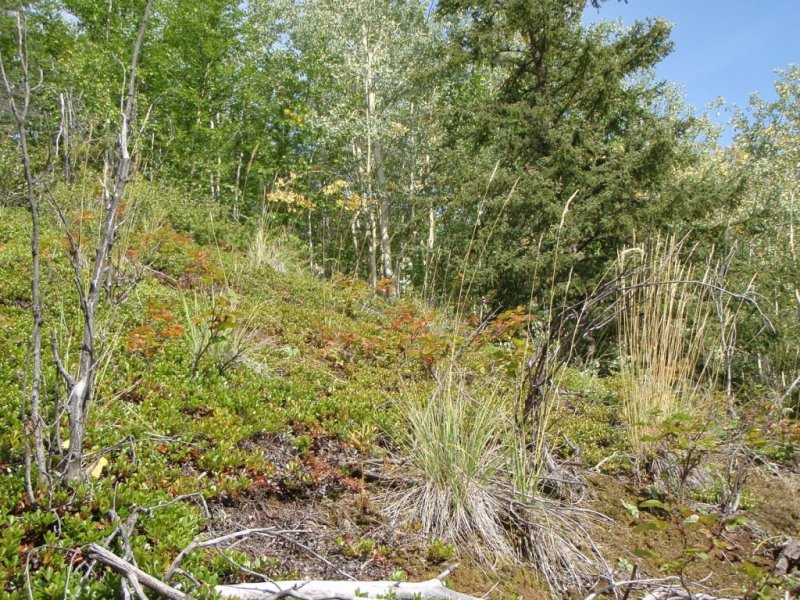
Figure 1. Scrub community sampled on steep and erosive escarpments in Yukon-Charley Rivers National Preserve Soil Survey (site R231XY109AK). The photo shows a mat of kinnikinnick with patches of purple reedgrass.
Table 1. Dominant plant species
| Tree |
(1) Populus tremuloides |
|---|---|
| Shrub |
(1) Artemisia frigida |
| Herbaceous |
(1) Calamagrostis purpurascens |
Legacy ID
F232XY211AK
Click on box and path labels to scroll to the respective text.
